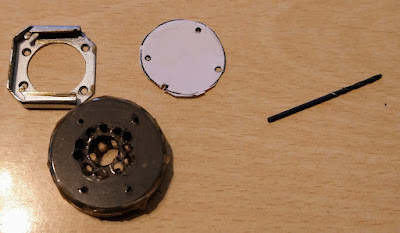Newly arrived to my blog? Want to know more about me before you dive into my posts? Why not visit the home page first and start your exploration from there:
https://undersouthwestskies.blogspot.com/2025/01/welcome-to-my-new-astronomyastrophotogr.html
And welcome. Welcome to 'UnderSouthWest Skies'. Thanks for stopping by. I hope you find the experience worthwhile. This blog post has been written from my own 'beginner perspective' after doing lots of reading on the topic below. In getting my head around it all, I may have got odd bits slightly wrong; but, like you, I am on a leaning journey, so please forgive any unintentional errors. Meanwhile, clear skies to you. Take care and thanks for visiting Steve aka PlymouthAstroBoy
Finally, I have got around to making a right angled polar scope viewfinder. The cost of them is around £80 mark with postage, here in the UK. I had an old pentax DSLR right angled view finder and I was sure I could 'adapt' it. Now there is an issue in that this old one mirror flips everything horizontally....but more of that little quirk later in the post.
I've wanted one of these right angled viewers for quite some time. I find it increasingly difficult to bend down and look up through the central polar scope of my skywatcher star adventurer tracker (same for my Ioptron sky tracker as well). There isn't an astrophotographer alive who uses a star tracker who doesn't understand this issue. Here at a latitude of 50N - the tilt of the tracker is such that when the polar scope is inserted, you are on your knees with your back arched to look up through it. If you can do that! When I'm on my knees below it, my eye is around 14" away from the viewfinder - rendering it useless! If I try to get underneath it and closer, I invariably end up knocking the tripod and then struggling to get back off my knees - very frustrating!
When doing DSO astrophotography and using my ASIair mini - then there is no problem if I am slightly out in the initial polar alignment as the ASIair helps me correct it quickly. But when doing milky way astrophotography - then a right angled viewing gizmo is going to be very helpful indeed.
So what stuff did I use?
- an old pentax right angled DSLR viewer
- electrical tape
- an old polar scope cover piece I had knocking about
- some very tiny phillips screws
Ten minutes judicious use of my multi-tool with drill and then sander bits and hey presto - the protective lid had been cut out. It was then just a matter of screwing the lid back onto the DSLR viewfinder and then doing a few trial fits.









No comments:
Post a Comment
Hello, thanks for visiting us. If you want to drop a comment or get in touch - leave a comment and we will get back to you asap. Bye